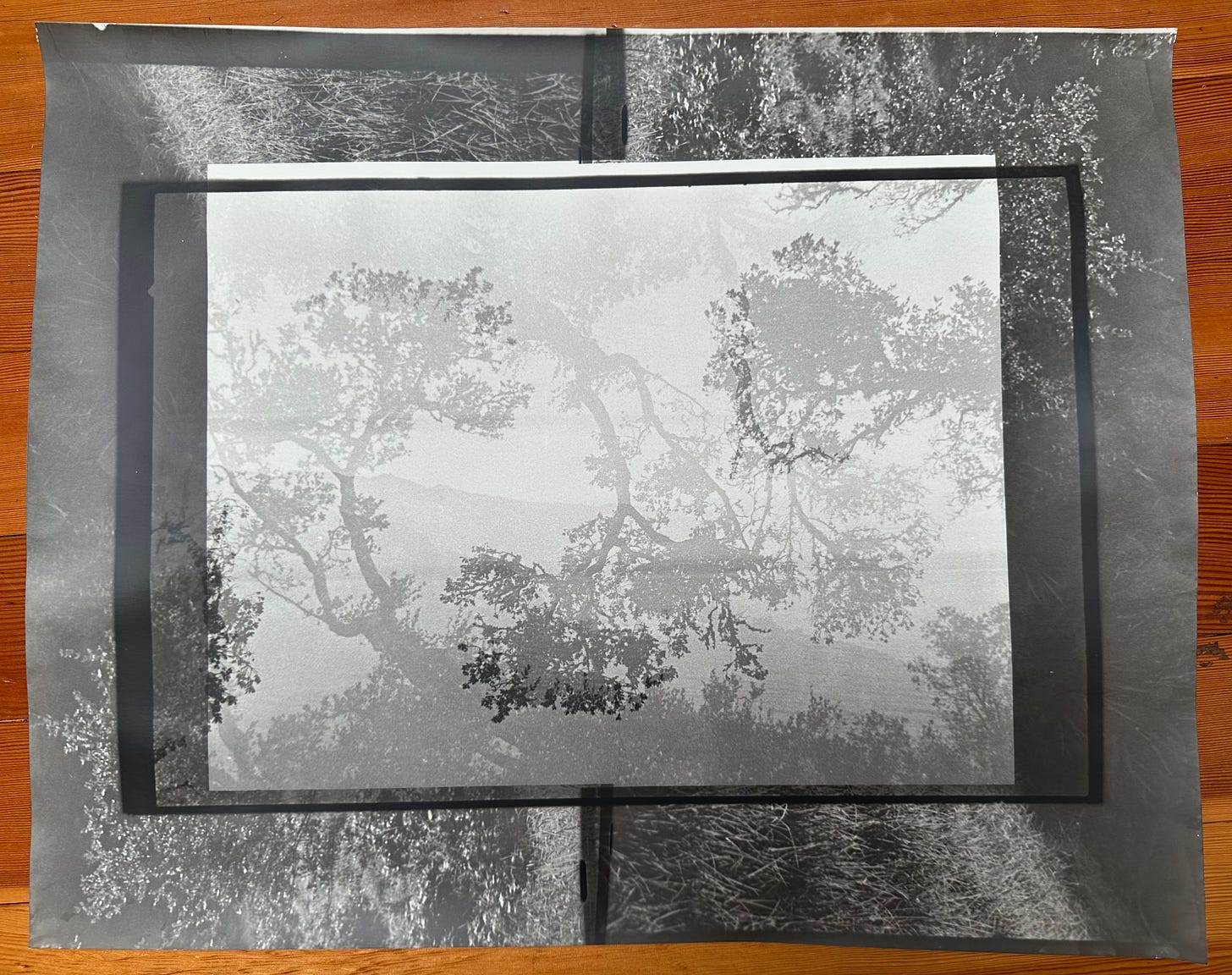Reviving the Craft of Plant-Based Photo Developing
For Beatrice Thornton, an artist, photographer, and archivist based in Oakland, CA, nature is more than a muse: It's also the source of the sustainable materials she uses for developing analog film.
Dear Friends,
Many photographers share a passion for analog film. However, most of the chemicals used in a typical darkroom today are known to be hazardous, both to humans and to the planet—a quandary for artists who find inspiration in the natural world.
For photographer Beatrice Thornton, nature is more than just a muse—it's an essential partner in her creative process. Thornton has revived and refined a developing technique using plants that she forages herself, incorporating their properties into her work in both the literal and the artistic sense.
We hope you’ll enjoy reading this week’s new story, written by our gifted contributing editor, Jeff Greenwald. As with all of our premium content, it’s available only for our paid subscribers here on Substack. If you haven’t yet subscribed, you’ll find a free preview below. If you already subscribe, enjoy the full story that follows.
We always welcome your thoughts and suggestions, which you can offer in a comment, by tagging us in Substack Notes, or via email. Thank you for reading and sharing our stories, for supporting our work with a paid subscription if you can, and for being such a loyal part of the Craftsmanship community.
Sincerely,
Todd Oppenheimer
Publisher & Editor-in-Chief, Craftsmanship Magazine

Reviving the Craft of Plant-Based Photo Developing
Written by
Slightly more than 3 miles long, California’s Sausal Creek originates in the Oakland hills and flows on a fairly straight course toward the Oakland estuary. For centuries, Indigenous Ohlone tribes and their descendants have been gathering seeds and berries along its willowed banks. But today, walking along the Sausal on a sunny May afternoon, photographer Beatrice Thornton is foraging for darkroom chemicals.
“I love how this trail changes every day,” she says, stopping to admire a blooming nasturtium. “I really notice the life cycles of plants: what's in season, what's going to be in season.”

Thornton is a slender, athletic woman, articulate and thoughtful. In many ways, this creek has been her muse. “When I was younger, I never paid much attention to the species of plants. It was all just stuff that grew there. But having the chance to go on this trail every day, I’ve been learning much more about the history of the area. I’m much more conscious of what is native and what is invasive.”
Today, Beatrice is on the lookout for elderberry. Aside from making a good cordial, it’s rich in polyphenols: an antioxidant compound found in all plants. These antioxidants can be used—in combination with vitamin C, super washing soda, and even coffee—to develop negatives and prints in her plant-based craft of “analog” photography.




